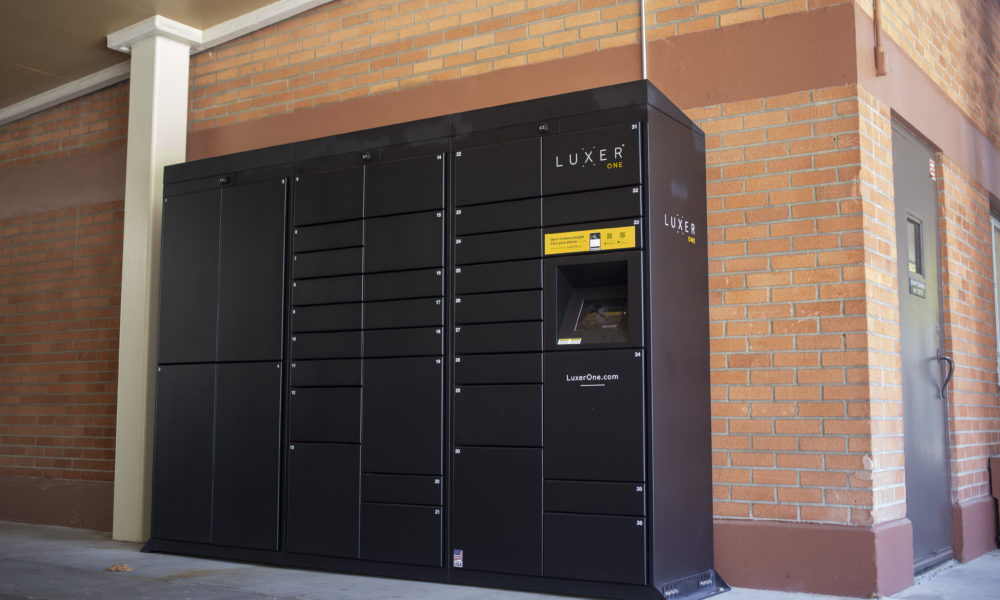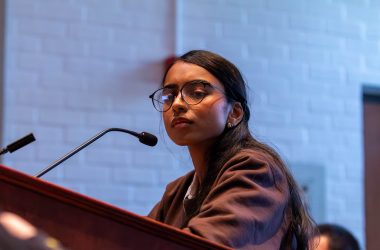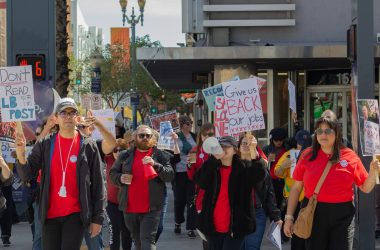In an effort to avoid in-person interaction, Long Beach State has installed Luxer One smart lockers on campus for students to check out borrowed technological equipment from the university.
Part of the Division of Information Technology’s Smart Campus Initiative, the on-campus smart lockers seek to “leverage new and emerging technologies to improve technology services for the campus community,” according to Bryon Jackson, assistant vice president of Unified Technology Support and Innovation.
“The smart locker system was installed to provide students safe and secure means of checking out and returning equipment required for their course work,” Jackson said.
As secure storage systems, smart lockers offer the opportunity to provide both the campus and students with a reliable method of equipment distribution. The smart locker will reduce the need for in-person checkout as it allows students to return borrowed equipment without engaging in any faculty or staff.
According to Min Yao, CSULB’s vice president and chief information officer, the residence halls have been using the smart lockers “for a while,” and positive feedback from housing students led the school to install two others, one at the library and one at the College of Liberal Arts.
“We pay close attention to the changing technology needs of our campus community during COVID-19 and adjust our technology services accordingly to provide the most efficient and effective technology services to students, faculty and staff,” Yao said.
Yao said the school chose to use the same brand for all smart lockers on campus to “eliminate the need to learn and support multiple brands of locker systems” and improve efficiency of support services.
Spearheaded by Dan Olsen, technology coordinator for the Department of Journalism and Public Relations, the smart locker project was a joint effort by the Division of IT, the College of Liberal Arts and several other departments. Olsen said he brought the idea to administrators in April and the CLA’s locker “went live the first week of September.”
“A lot went into this. It wasn’t just me twiddling my thumbs and saying, ‘Oh, this is an awesome idea let’s do it,’” Olsen said. “This was a campus collaboration.”
As the technology coordinator, Olsen works with students to loan them equipment from the department.
Prior to the installation of the smart lockers, though, students wishing to borrow equipment were limited to checkout times that fell under Olsen’s schedule.
“This whole project is really putting the students’ needs first,” Olsen said. “Because we have made a really significant investment over the last eight years in building up all of our equipment, but if we didn’t have staff able to distribute it, then it just was just kind of a downer that we had all this equipment and we weren’t able to use it.”
Olsen said he had been looking for a way to be able to provide students with after-hours access to equipment, and CSULB’s transition to virtual learning back in March was just the driving force he needed.
During a remote semester, Olsen said he felt it was important for the department to find a way for students who rely on this campus resource to still have access, while upholding health and safety regulations.
“One of the things that went into this whole project was finding out a way to safely get the equipment into our students’ hands,” Olsen said. “We had a process that I would call pretty high-touch, where I get to know the students, understand their needs and come and visit their classes…but I always felt like we were falling a little short because we just couldn’t get access 24/7 for our students.”
Olsen said he pre-stocks the CLA department’s smart locker, located outside Liberal Arts 4, with basic equipment such as cameras and audio recorders. Students looking to borrow equipment must fill out a liability form using DocuSign and await email approval from Olsen containing a QR code.
He said the project went through a “beta test of the system” using administrators and CLA faculty, then had four students check out and return equipment during a “two-week soft launch.”
“It’s worked flawlessly. It’s been absolutely awesome,” Olsen said. “Next week I’m going to start virtually visiting classes.”
In a contact-free checkout process, students are able to present the QR code to the camera on the locker, causing their designated locker to automatically pop open.
For security reasons, the University Police Department needed to authorize the use of cameras in the smart lockers, which take a photo of the equipment being checked out to provide “proof of what came out and went into the lockers,” Olsen said.
Olsen said he feels “really proud” of how the project came together as a collaborative effort.
“Yeah, it was my idea to kick it off, but it just involves the support of so many different people,” Olsen said. “And doing it from a distance like we did, considering we’re not working on campus, I think as quickly as we did really was amazing.”




